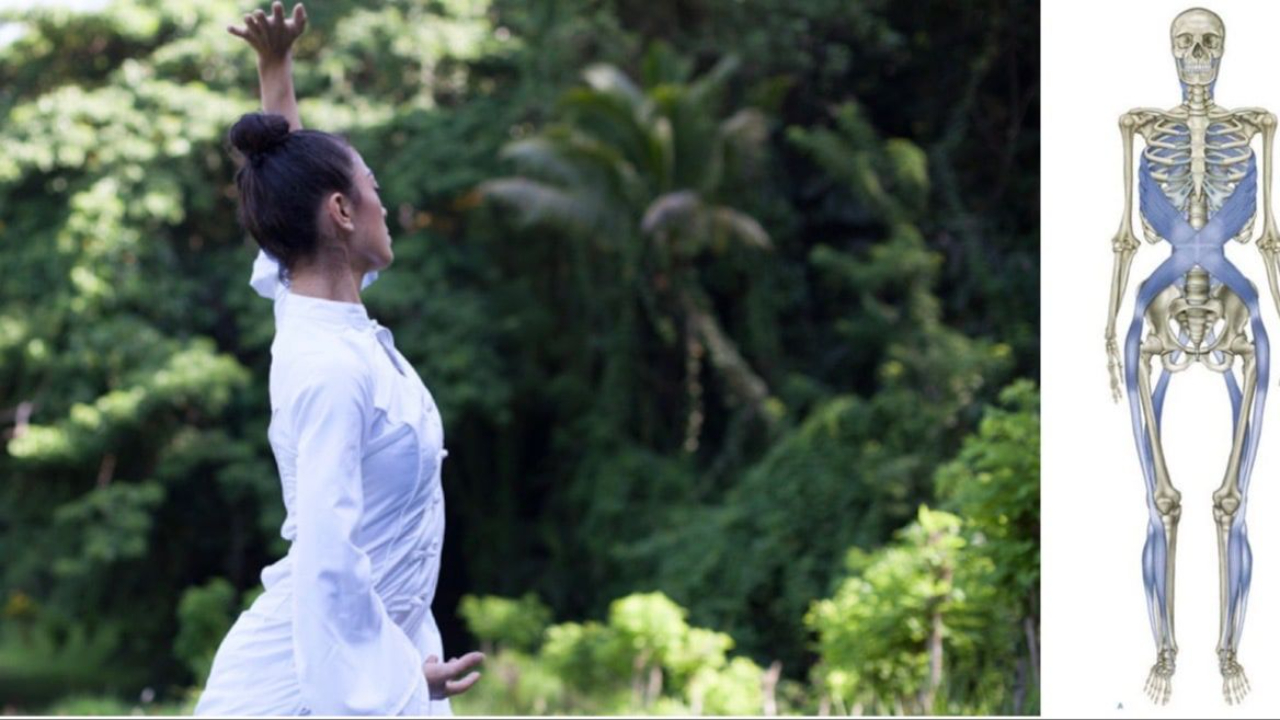
Modern Research on Muscle Fascia and its Connection with Qigong
Oct 12, 2017
As Qigong goes through a modern evolution, much research has and is being conducted to improve Medical Qigong’s efficacy through using insights from modern medicine and scientific research. As my master told me, he always wished his students would evolve the existing Qigong. This is why I have delved deeply into fascia research. I have gained incredible insights and breakthroughs that I am sharing with you.
Muscle Fascia: Thomas Meyers’s Discovery

There has been ongoing research into physically identifying where the meridian systems actually are in the body. In his ground-breaking book “Anatomy Trains”, Thomas Meyers dissected cadavers to understand the inner workings of the muscle fascia. He discovered previously unknown lines of muscle fascia interwoven throughout the body. He called these connections The Myofascial Meridians. At the time, he was neither looking for nor referring to the Asian Meridian system. It was only later that he realized the uncanny parallels of the meridian lines in Traditional Chinese Medicine to his own discovery of these Myofascial Meridian lines.
On a simple level, muscle fascia can be defined as the dense fibrous connective tissue that interpenetrates and surrounds the muscles, bones, nerves, and blood vessels of the body. Meyers explains that fascia is the biological fabric that holds us together. You are about 70 trillion cells all humming in relative harmony; fascia is the 3-D spider web of fibrous, gluey, and wet proteins that hold them all together in their proper placement. Understanding fascia is essential to the dance between stability and movement – crucial in high performance, central in recovery from injury and disability, and ever-present in our daily life from our embryological beginnings to the last breath we take.
What Meyers explains is his belief that the Western anatomy perspective of individual muscles is not true. He believes that we don’t have 600 muscles; we actually have one muscle within 600 fascial pockets. This would confirm the Chinese belief that blockages in one meridian line can affect other meridians as well.
The Link between Acupuncture and the Fascial Network
Modern research has shown the link in both form and function between the workings of acupuncture and the fascial network in general. Prominent acupuncturist and researcher, Dr. Helene Langevin, has shown that connective tissue along with collagen fibers and fibroblasts wind around the end of an acupuncture needle when it is rotated in place, creating detectable mechanical effects. Dr. Langevin concluded that oriental acupuncture meridians may follow intermuscular or intramuscular fascial planes.
Read more in the Five Animal Qigong book.
Qigong and Muscle Fascia
One of the greatest joys and fascinating aspects of Qigong for me was the discovery of the connections within my body. As a young student, I thought it rather mystical to feel these connections, but as I began to study Western anatomy, I realized I was in fact feeling the connections of the muscle fascia throughout my body. My discovery of Thomas Meyer’s work and others helped to confirm evidence of what I had known all along. It is one thing to read about the meridians, but to feel and experience these connections takes patience and lots of practice and the rewards are immeasurable.
Imagine right now you are wearing a suit. Your skin is your suit. Underneath your skin, you have layers of other clothing which are your deeper layers of fascia. They move against one another, sliding, pulling and stretching as well as contracting. Now imagine you can change the shape of your suit. You can have a tight suit, loose suit, relaxed and supple suit, or a strong suit. What kind of suit do you want?
This Qigong system creates what we call the “Bamboo Body”. It is strong, yet flexible, supple and elastic. Think of the bamboo tree, it moves with the wind yet stays rooted and firm. You can bend it very far and it will snap right back with high elasticity. Why wouldn’t you want to make this kind of suit?
We are remodeling your fascia, your nervous system and your self-image. By practicing the animal movements, we change the way we perceive ourselves and our relationship with the world.
-Tevia Feng
*This article is an excerpt from the book Five Animal Qigong
You can also see the entire course on fascia in the Five Animal Qigong Online Course
Find out about the next White Tiger Qigong live training on our event page or explore the rest of our Qigong blog here.



